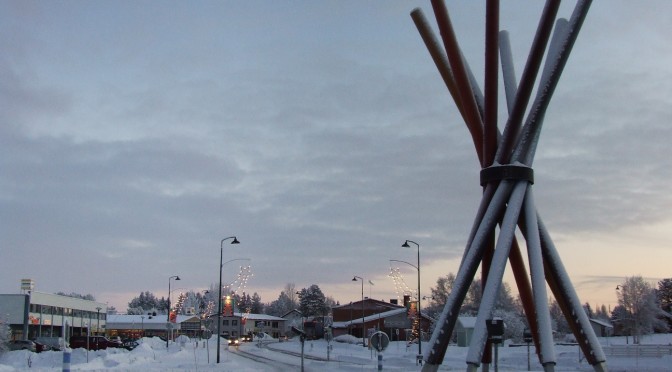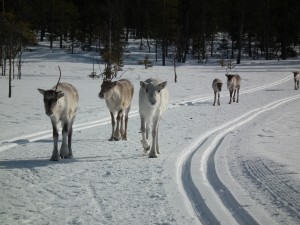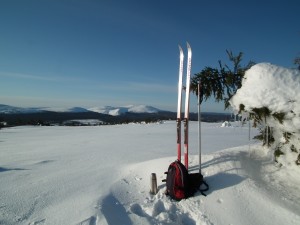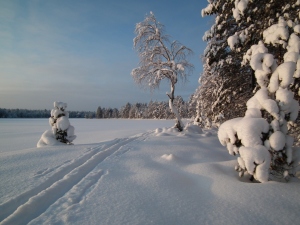Kuolajarvi village Salla
Kuolajarvi village Salla stands on the far-East border of Arctic Finland, it belonged to the Kuolajarvi municipality, the Province of Lapland, north-eastern Lapland. Kuolajarvi municipality was established during the Russian Tsar period, in 1857 separating the municipality from the Kuusamo municipality.
The name Kuolajarvi was later changed to Salla in 1936. After the Second World war, in the aftermath of the municipality of Salla was forced to cede the territory to the Soviet Union Stalin demands, consequently doing 50 % of the Salla municipality is so-called the “Old Salla” which is now claimed by Kola region of Russia.
The original Kuolajarvi village was an old and beautiful residence about 35 miles from the current Finland Salla border station towards the east and placed at the current Kuola-lake Lower and Upper areas of Kuolajarvi.
The village comprised of three parts: Keski-Niemi (lake midpoint/central cape), and the top end of the lake (yla-paa) and the lower end of the Kuola-jarvi (lake).
Kuolajarvi the village in 1930 had about 60 houses, and about four hundred inhabitants.
The Stalin aggression during the 1939-45 the kuolajarvi village was handed over to the Soviet Union, with another seven villages of the Luolajarvi municipalities. Today, the area is marked on the Russian maps as Kairala village and settlements there is only the former Central cape, through which runs the road to Kandalaksha.
The Kuola-lake village is often confused with the other uses of Kuola-lake, as in the municipality administrator or as in the kuola-lake township. There are distinctly separate entities in the history of kuola-jarvi:
- Kuolajarvi village
- Kuolajarvi municipality
- Kuolajarvi, then, was the parish, as well as that of the village name.
The Kuolajarvi village Salla name officially changed to Salla in 1936. Today, the use of the name has two purposes, when remembered ‘Kuolajarvi municipality,’ it often refers to the whole parish of Kuolajarvi.
The village use of the name is usually referred to as a “Kuolajarvi village.”
- Central Cape or “Keski-Niemi”. Keski-niemi was the Kuola-lake Upper and Lower central isthmus, which was fairly densely populated. This was the center of the Kuola-lake village.
- Lower Kuola-lake.
The lower end of Kuola-lake (Alajarvi) had the two sides of the lake well established with a group of houses. The western shore of the lake was almost completely nutrient-rich and lush covered fields. Numerous dikes could add to the richness of the landscape. - The upper end (Ylipaa).
Kuola-lake southernmost end of the village, Aapajarvi and Central Lake isthmus region and Aapajarvi east side was generally termed as Upper end (Ylipaa). Central Lake region was also called Upper lake (Ylijarvi).
Kuolajarvi village Salla self-sufficiency of the 18 century
Almost every dike ditch had a private water mill, which was used to ground barley flour.
Before the Winter War in 1939 Kuolajarvi village had about 50 properties and almost four hundred inhabitants. The village had by that time standards many wealthy houses, and we were almost completely self-sufficient regarding food. The village was cultivated barley, rye, potatoes; many had their own small scale flour mill.
Kuolajarvi name change to Salla 1936
The name Kuolajarvi was changed to Salla in 1936. The name Kuolajarvi is translated to mean; a lake with plenty of fish. The word Salla in the regional Lapp language is synonymous with the words: “groove, furrow, or even being cradled in the lap.” The connotation of the word is to “belong,” to a place.
As the result of demands made by Stalin during the war, nearly half of the municipality of Salla area (49 %) was extorted by the threat of military war and forced to hand over (threatened with further war violence) to the former Soviet Union.
22 municipality regions were lost, altogether there were 8 villages (Korja, Kuolajarvi, Kurtti, Lampela, Sovajarvi, Tuutijarvi, Vuorijarvi, Vuosnajarvi) areas and the village of Salla municipal division of the area lost almost entirely.
Food Tradition
Traditionally many food dishes were common that are still enjoyed today, well known familiar dishes such as saute reindeer, dried reindeer meat soup and mashed butter potatoes. The difference between the present times was the fact that more parts of the animal were used to prepare foods for nutritional benefit.
Reindeer vital food source
Kuolajarvi village Salla cuisine did very much make use of the regional natural food sources, just like many other extreme places of the world people’s survival was often tested and critical. Most readily available food sources were fish from the lakes, rivers, and the White Sea, and game birds and other edible game meat. Reindeer head soup and kopara stew, were made more frequently than at present, and also reindeer abdominal skin was used for food. Reindeer blood was used to make quick bread.
Nordic wild Berries from nature
Nordic berries were collected and stored as much as could be. Bilberries preserved well when dried, ripe Lingonberries were crushed to preserve them in the underground earth cellars, and Lingonberries preserve themselves brilliantly through 6 months through the autumn, winter and the spring seasons, without any mold formation.
Village store
The village shops were bought coffee, sugar (toppa sokeria), salt, and other things which were not locally manufactured. Bread and wheat preparation was, of course, prepared at home locally. Such homemade food enjoyment pleasures would have hardly be considered as an opportunity for entrepreneurship business and placing them for sale in a local shop.
Today, the use of the name has two applications, when remembered ‘Kuolajarvi municipality,’ it often refers to the whole parish of Kuolajarvi. The village use of the name is usually referred to as a “Kuolajarvi village”.
Before the Winter War in 1939 Kuolajarvi village had about 50 properties and almost four hundred inhabitants. The village had by that time standards many wealthy houses, and we were almost completely self-sufficient in terms of food. The village was cultivated barley, rye, potatoes; many had their own small scale flour mill.
Kuolajarvi village Salla review
Thank you for visiting Lapland Guide.net website and for reading this Kuolajarvi village Salla article. Please do visit website http://arcticfinland.net for further reading on the Arctic Finland topic.





